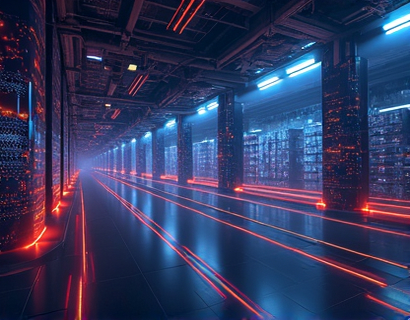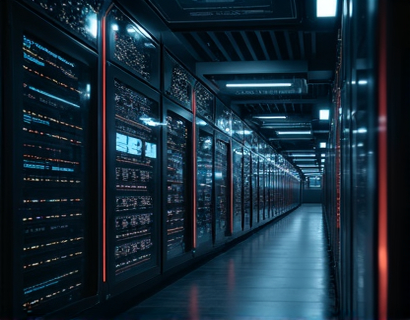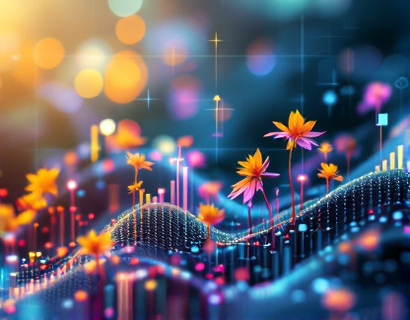Elevate Your Aquaculture Business with Advanced Software Solutions
In the rapidly evolving landscape of aquaculture, business owners and managers face numerous challenges that can impact the success and sustainability of their operations. From managing complex logistics and resource allocation to ensuring compliance with regulatory standards, the demands are multifaceted. Advanced software solutions are revolutionizing the way aquaculture businesses operate, offering powerful tools that streamline processes, enhance productivity, and optimize resource management. This article delves into the critical role of aquaculture software, exploring how it can transform your business and provide essential advantages in a competitive market.
Understanding the Importance of Software in Aquaculture
The aquaculture industry has seen significant growth over the past few decades, driven by increasing global demand for seafood. However, this growth has also brought about increased complexity in managing aquaculture operations. Software solutions are designed to address these complexities by providing comprehensive tools that cater to various aspects of business management. These tools help in automating routine tasks, improving data accuracy, and facilitating better decision-making.
One of the primary benefits of adopting aquaculture software is the ability to centralize and manage data effectively. Traditional methods of record-keeping, such as manual logs and spreadsheets, are prone to errors and inefficiencies. Advanced software platforms offer a centralized database where all relevant information can be stored, accessed, and analyzed in real-time. This not only enhances data integrity but also ensures that all stakeholders have access to the most up-to-date information.
Key Features of Aquaculture Management Software
Aquaculture management software is equipped with a range of features that cater to the specific needs of the industry. Some of the most critical features include:
- Fish Inventory Management: Track the number, size, and health of fish in different tanks or ponds. This feature helps in monitoring growth rates, identifying health issues early, and optimizing feeding schedules.
- Feeding Management: Automate feeding schedules based on the species, size, and environmental conditions. This ensures that fish receive the right amount of feed at the right times, reducing waste and improving growth efficiency.
- Water Quality Monitoring: Continuously monitor parameters such as pH, temperature, dissolved oxygen, and ammonia levels. Alerts and notifications can be set up to inform managers of any deviations from optimal conditions, enabling prompt corrective actions.
- Production Scheduling: Plan and manage production cycles, including breeding, harvesting, and processing. This feature helps in optimizing the use of resources and ensuring smooth operations.
- Financial Management: Track expenses, revenues, and profits in real-time. This helps in making informed financial decisions and maintaining a healthy bottom line.
- Compliance and Reporting: Ensure adherence to regulatory standards by generating reports and documentation required by authorities. This feature simplifies the compliance process and reduces the risk of penalties.
These features, when integrated into a single platform, provide a holistic view of the aquaculture operation, enabling managers to make data-driven decisions and improve overall efficiency.
Enhancing Productivity Through Automation
One of the most significant advantages of aquaculture software is the automation of routine tasks. Manual processes, such as recording data, generating reports, and managing schedules, are time-consuming and error-prone. Automation not only saves time but also reduces the likelihood of human error, leading to more accurate and reliable operations.
For instance, automated feeding systems can be programmed to dispense feed based on predefined parameters, ensuring that fish are fed optimally without human intervention. Similarly, water quality monitoring systems can continuously track and adjust conditions, maintaining optimal environments for fish growth. These automated processes free up staff to focus on more strategic tasks, such as market analysis, business planning, and customer relations.
Optimizing Resource Management
Effective resource management is crucial for the sustainability and profitability of aquaculture operations. Advanced software solutions help in optimizing the use of resources, including feed, energy, and labor. By providing real-time data and insights, these tools enable managers to identify areas of inefficiency and implement corrective measures.
Feed optimization is a prime example. By analyzing data on fish growth, feed consumption, and environmental conditions, software can recommend the most efficient feeding strategies. This not only reduces feed costs but also minimizes environmental impact by preventing overfeeding and waste. Energy management features can monitor and optimize the use of equipment, leading to lower energy bills and a reduced carbon footprint.
Labor optimization is another critical aspect. Software can help in scheduling staff based on operational needs, ensuring that the right number of personnel are available at the right times. This not only improves productivity but also enhances worker satisfaction by reducing overwork and burnout.
Improving Decision-Making with Data Analytics
Data analytics plays a pivotal role in modern aquaculture management. Advanced software platforms offer robust analytics tools that transform raw data into actionable insights. Managers can use these insights to make informed decisions on various aspects of the business, from stock management to market trends.
For example, by analyzing historical data on fish growth and market prices, managers can predict future demand and adjust production schedules accordingly. This proactive approach helps in maximizing profits and minimizing risks. Additionally, analytics can identify patterns and trends that may not be immediately apparent, such as correlations between water quality parameters and fish health. These insights can lead to improved management practices and better overall performance.
Enhancing Customer Satisfaction and Market Competitiveness
In a competitive market, customer satisfaction is key to long-term success. Aquaculture software can help in enhancing customer satisfaction by ensuring consistent quality and reliability in product delivery. By monitoring and controlling various aspects of the production process, managers can maintain high standards of quality, which is crucial for building and retaining customer trust.
Moreover, software solutions can streamline communication with customers and other stakeholders. Features such as customer relationship management (CRM) can help in managing orders, feedback, and complaints efficiently. This not only improves customer service but also provides valuable feedback for continuous improvement.
In terms of market competitiveness, advanced software can provide a competitive edge by enabling businesses to respond quickly to market changes. Real-time data and analytics allow for agile decision-making, enabling businesses to capitalize on new opportunities and adapt to challenges more effectively.
Case Studies and Success Stories
Several aquaculture businesses have successfully implemented advanced software solutions, leading to significant improvements in operations and profitability. For instance, a large-scale salmon farm in Norway adopted a comprehensive management software that integrated fish inventory, feeding, and water quality monitoring. The result was a 15% increase in production efficiency and a 10% reduction in feed costs. The farm's manager attributed these improvements to the software's ability to provide real-time data and actionable insights, enabling more precise and timely decision-making.
Another example is a shrimp farm in Thailand that implemented an automated feeding system and water quality monitoring software. The farm reported a 20% reduction in labor costs and a 15% improvement in shrimp health and growth rates. The automation of feeding and monitoring processes not only saved time but also ensured consistent and optimal conditions for shrimp cultivation.
These case studies demonstrate the tangible benefits of adopting advanced aquaculture software, highlighting its potential to drive significant improvements in operational efficiency and financial performance.
Challenges and Considerations
While the benefits of aquaculture software are clear, there are several challenges and considerations that business owners and managers should be aware of. One of the primary challenges is the initial cost of implementation, which can be a barrier for smaller operations. However, the long-term savings and efficiency gains often outweigh the initial investment.
Another consideration is the need for staff training and adaptation to new technologies. Successful implementation requires a commitment to training and support to ensure that all team members are comfortable and proficient in using the software. This may involve investing in training programs and providing ongoing support to address any issues that arise.
Compatibility with existing systems is also an important factor. It is crucial to choose software that can integrate seamlessly with current hardware and software infrastructure to avoid disruptions and ensure a smooth transition.
Future Trends in Aquaculture Software
The aquaculture software market is rapidly evolving, with new technologies and innovations emerging regularly. Some of the key trends to watch include:
- Artificial Intelligence and Machine Learning: AI and ML are being integrated into aquaculture software to provide more advanced analytics and predictive capabilities. These technologies can help in forecasting market trends, optimizing production processes, and identifying potential issues before they become critical.
- Internet of Things (IoT): IoT devices are becoming more prevalent in aquaculture, enabling real-time monitoring of various parameters. IoT integration with software platforms can provide a more comprehensive and dynamic view of the operation, enhancing decision-making and control.
- Cloud-Based Solutions: Cloud computing offers scalable and flexible solutions for aquaculture businesses, allowing for easy access to data and software from anywhere. This is particularly beneficial for operations with multiple locations or remote monitoring needs.
- Sustainability and Environmental Monitoring: As sustainability becomes a key focus for consumers and regulators, software solutions that emphasize environmental monitoring and reporting are gaining popularity. These tools help businesses demonstrate their commitment to sustainable practices and meet regulatory requirements.
Embracing these trends can position aquaculture businesses at the forefront of innovation, ensuring long-term success and resilience in a competitive market.
Conclusion
Advanced aquaculture software is a game-changer for businesses looking to elevate their operations and stay ahead in a competitive industry. By streamlining processes, enhancing productivity, and optimizing resource management, these solutions provide essential tools for success. While there are challenges to consider, the benefits far outweigh the costs, making investment in aquaculture software a strategic move for any serious aquaculture operation. As technology continues to advance, the potential for further improvements and innovations is vast, ensuring that the future of aquaculture is brighter and more sustainable than ever.










































